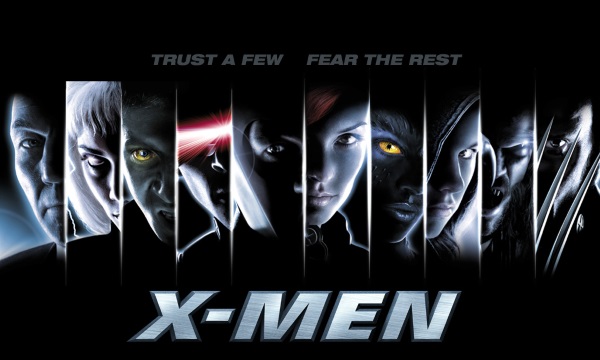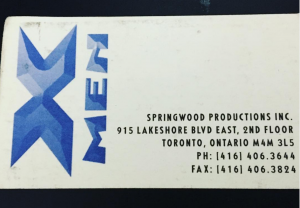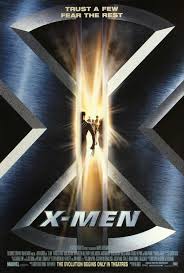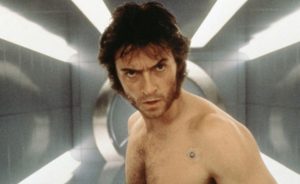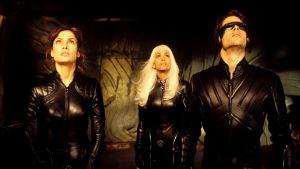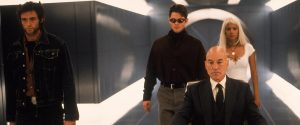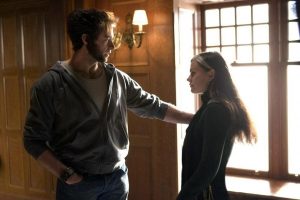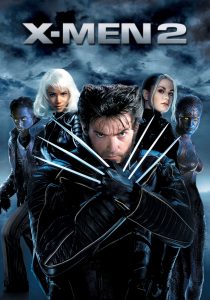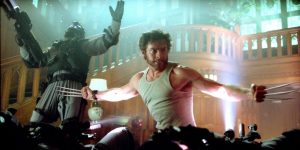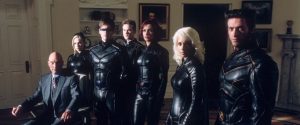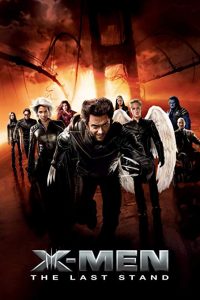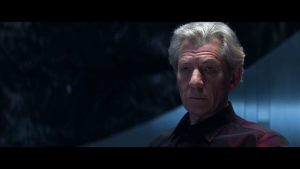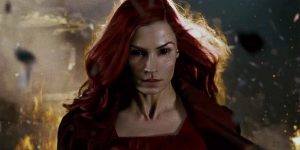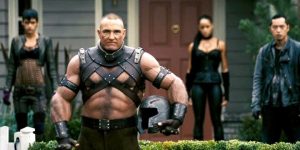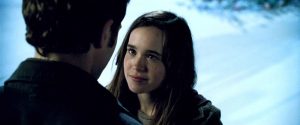This review was assembled just before the release of Dark Phoenix.
I recall reading the studio was planning three films to tell the story of Jean Grey’s transformation into the cosmic power of Phoenix, an operatic tale of good and evil—previously attempted in the third X-Men film, X-Men: The Last Stand—but I guess those plans were kiboshed when 20th Century Fox was purchased by Disney, bringing the X-Men and Fantastic Four characters back to the Marvel Studios fold. I hope they can do it justice in a single film.
This will be the last movie in the 20th Century Fox X-Men franchise. It’s had more than a few ups and downs in its 19-year history. I thought it would be worthwhile to go back and rewatch the first three, made in advance of a soft reboot/prequel series now concluding, to see how they hold up.
The original three predate the Marvel Cinematic Universe, and have allowed for the success of Kevin Feige—who was credited on X-Men movies as Associate Producer, Co-Producer, or Executive Producer respectively—in his work on the MCU. The X-Men franchise can comfortably take credit for having brought superhero movies into the new millennium.
In the interest of full disclosure: In the summer and fall of 1999, 20 years ago, I worked on X-Men in Toronto, first in pre-production as an office PA, and then for six weeks with the Visual FX team, helping catalogue effects shots. You won’t see my name in the credits, but I was there. If you’re looking for proof, I offer a crew gift and a business card.
Therefore, I can’t really review the film with much objectivity—but I’ll offer a few impressions, and a few memories.
X-Men (2000)
“Mutation. It is the key to our evolution”
And so it began, Patrick Stewart’s oh-so recognizable voice, giving him a second association with a pop culture fantasy phenomenon following Star Trek. His Professor Charles Xavier is just one part of this picture’s casting genius—Ian McKellan as Eric Lensherr aka Magneto is another, and the unknown Aussie Hugh Jackman as Logan aka Wolverine is the third. As Marvel Studios has learned, casting is half of what make these movies work.
The most controversial part of X-Men is the opening in Poland, 1944, the concentration camp where a young Magneto first manifests his powers, a Jewish boy separated from his parents. Critics thought the idea of associating this kind of fantasy movie with that real life horror was exploitative. To me, that concern feels overblown—this film isn’t exploitative, it’s using fantasy to offer an analogy for tolerance versus fear. That scene was shot at the Gooderham and Worts distillery district in Toronto.
Senator Kelly (Bruce Davison) is the American politician who’s looking to rustle up fear of mutants in the public. Logan aka Wolverine is a Canadian mutant who brawls for a living. Marie aka Rogue (Anna Paquin) is on the run, afraid of the damage her absorption powers can do. They’re saved by the X-Men, Xavier’s group of students who operate out of a school in Upper New York state, including Scott Summers aka Cyclops (James Marsden), Ororo Munro aka Storm (Halle Berry), and Jean Grey (Famke Janssen). Magneto has his own group of mutants on the payroll: Sabretooth (Tyler Mane), Mystique (Rebecca Romijn), and Toad (Ray Park).
I remember the production filling the studios on Lakeshore Boulevard East in Toronto. The Statue of Liberty sets, both interiors and exteriors, were shot in those studios. The Cerebro set was in studios in the upper floors of the CBC headquarters on Front Street West. Walking into the building with Patrick Stewart one Friday afternoon as everyone was getting off work was a lesson in celebrity—a lot of heads turned as he strolled through.
The Ellis Island scenes were some of the first shot. They did those on the grounds of the Central Toronto Academy in the west end of Toronto at Roxton and Dewson in September ’99—the New York harbour was all greenscreen.
McKellen, Janssen, and Jackman in their leather costumes, they were all extraordinary in person—sexy and instantly iconic. But, to be honest, it’s kind of amazing the final film turned out as well as it did. It was so large—the biggest production that ever shot in Toronto at that point—and seemed so chaotic behind the scenes, so many moving parts, multiple units shooting all at the same time.
I didn’t have much contact with the director—the now-controversial filmmaker Bryan Singer—but I do recall he was a shouter, not beyond throwing a tantrum when things weren’t going well.
Watching the film again, while some of the effects haven’t aged terribly well, it retains a thematic power as a civil rights allegory, with Xavier its Dr King, Magneto its Malcolm X. Again, it’s hard to go wrong with Stewart and McKellan in those roles, but Berry doesn’t have nearly enough to do. Storm in the comics is a far more interesting a character than she’s ever been on screen, which feels sadly ironic. But the care and seriousness with which the filmmakers approached this material, it made all the difference.
X2: X-Men United (2003)
16 years out, this is still the best of the X-Men franchise, of these three, the Wolverine spin-offs, and the current prequels. From the dazzling opening sequence, Kurt Wagner aka Nightcrawler’s (Alan Cumming) attempt on the life of the president scored to Mozart’s Requiem, to the introduction of Brian Cox’s obsessed anti-mutant military man, Stryker, to the team-up with Magneto and Mystique, the film has all the advantages of a second film in a franchise, allowing the characters more time to breathe, and a complexity to establish. The tone is very much a thriller, infused with a post-9/11 darkness that thematically kicks against conservatism and xenophobia, which in 2003 was on the rise.
The mutants are both the pawns, and the victims, of humanity’s growing fear and hatred, and Stryker a monster who deftly channels those emotions. Professor Xavier is once again too powerful to allow for much suspense, so is nullified for much of the running time, just like in the first film.
Singer directs with a lot of humour, great character moments, and a deft way with the action beats.
One of major missing notes in these films is the lack of chemistry between Jean Grey and Scott Summers—there’s just nothing going on there, but Marsden isn’t given a fraction of the tortured complexity his character has in the comics, or doesn’t bring it—one or the other. That might help with making Logan more appealing as a romantic possibility for Jean. A smaller, but noticeable point, is Storm’s suddenly absent African accent.
I enjoy the quieter, domestic scenes here—Bobby Drake aka Iceman (Shawn Ashmore) cooling off Logan’s drink, the cat licking Logan’s claws, Bobby’s family bigotry—shades of Buffy The Vampire Slayer—where their fear and resentment mirrors the way any number of minority communities have been treated, whether racial, LGBTQ, or otherwise.
X-Men: The Last Stand (2006)
I remember the marketing for this film very much accentuating that this picture was not only the conclusion of the trilogy, but the end of the X-Men franchise. At the time it made no sense: Why would 20th Century Fox choose to wrap this up when the last film was such a success? Also, why would Bryan Singer step away from the franchise as a director to instead direct the deeply flawed Superman Returns, leaving this picture in the hands of Hollywood hack and alleged douchebag Brett Ratner? It all speaks of bad decision-making at the highest levels, and the resulting film is probably the least admired of the entire franchise. Watching it again, I found it almost holds together and is better than I remembered.
It starts well enough, with younger versions of Charles Xavier and Eric Lensherr (de-aging CGI has come a long way since then) meeting with a teenaged Jean Grey, and she shows off her extensive psychic power. Then we have a scene with X-students in the Danger Room, their training holodeck, versus a Sentinel, a massive mutant-hunting robot. The scene also includes the first appearance of Elliot Page as Kitty Pryde—the character had shown up in the previous films, but only fleetingly and played by other actors. Daniel Cudmore reprises his role as Piotr Rasputin aka Colossus, but once again isn’t given an actual personality. Kelsey Grammer as Hank McCoy aka Beast gets plenty to do as a government bureaucrat, Secretary of Mutant Affairs, in charge of the mutant issue and helping hunt for Magneto, who remains at large. It’s good to see Anthony Heald playing an FBI interrogator, continuing to riff on his Dr Chilton persona from Silence Of The Lambs.
The real issue here is the government scientists invention of a so-called “cure” for the mutant gene, and the reaction to that from the various players. Rogue is intrigued, because she can’t touch anyone and sees her boyfriend, Iceman, getting friendly with Kitty Pryde. Storm is outraged. Magneto uses the news to gather the mutant troops, to cry genocide. We also get Michael Murphy as a politician looking to cure his winged son (Ben Foster), Warren Worthington, one of the original X-Men in the comics. It’s a fascinating plot hinge that could swing some real depth and debate in this blockbuster. The first 25 minutes are as good an X-movie as we’ve had so far. But then Jean Grey comes back from the dead.
The Dark Phoenix saga in the comics—co-written by Chris Claremont and illustrator John Byrne— were wonderful, but also shocking, because Grey was a founding member of the X-Men and lead characters didn’t die in the comics, not for want of trying. Grey had already sacrificed herself for her friends and had returned to life thanks to the Phoenix force, a cosmic, elemental power. When her mind is controlled by Jason Wyngarde aka Mastermind, part of the mutant-heavy nasties the Hellfire Club, the Phoenix power overwhelms her, and she goes on a galactic killing spree. She’s stopped by her friends in the X-Men, and the Phoenix is locked away by Xavier’s psychic surgery, but by then she’s destroyed planets. Grey is brought before a galactic tribunal, led by Lilandra of the alien species the Shi’ar, to answer for her crimes. Grey and the X-Men end up fighting a duel of honour with the Shi’ar Imperial Guard, and when it looks like the Phoenix power will resurface, Grey uses an alien weapon to commit suicide.
Ratner and his screenwriters—Zak Penn and Simon Kinburg—borrow from the classic comic story with a far more earth-bound, and clumsy, approach. Jean Grey did sacrifice herself at the end of X2: X-Men United, but her Phoenix persona is explained as a dual personality, the dark side of her power Xavier hid from her when she was a child. That’s fine, but there’s a movie and a half worth of plot here, and the “mutant cure” elements work a lot better, and are given much more time, than Jean Grey, or poor Scott Summers for that matter, who dies off-screen and never even gets a funeral.
The final fight, mutant against mutant, on Alcatraz, has things to recommend it, Ratner’s dull directorial choices notwithstanding. Vinnie Jones as Juggernaut gets to say his now-legendary line at Page, “I’m Juggernaut, bitch!” and typically, Hugh Jackman delivers everything that’s required of him and more.
(It’s too bad his solo spin-off, Wolverine: X-Men Origins (2009),was a stinker, though its follow-up The Wolverine (2013) was an improvement, and Logan (2017) works as a superb, stand-alone apocalyptic coda to the entire X-Men series to date.)
At the end of The Last Stand I had to wonder, given the plethora of “mutant cure” handy, did Logan ever think to try it on Jean? And how exactly did the issue of the cure get settled in American society, given the immense loss of life in the battle on Alcatraz? You’d think after that, the government would’ve insisted all mutants get the “conversion therapy.” And the post-credit sting, suggesting the resurrection of Charles Xavier, that was well-seeded, though disappointingly never explained or followed up in subsequent films. The X-movies are not great with continuity, and just get worse later on once time-travel becomes a key plot point.
The first prequel X-Men: First Class (2011) has its fans, and while I understand why, it’s not my favourite. I do enjoy the recast, younger Magneto, Michael Fassbender, and his James Bond-esque mission of revenge. X-Men: Days Of Future Past (2014) is a more satisfying superhero and science fiction movie, and nicely wraps up the franchise from a storytelling perspective as it knits both the original trilogy and the prequels — it’s the closest this franchise has come to besting X2. But they just couldn’t leave it alone and went back for X-Men: Apocalypse (2016), which is a disappointment.
Go here for my Dark Phoenix review.





